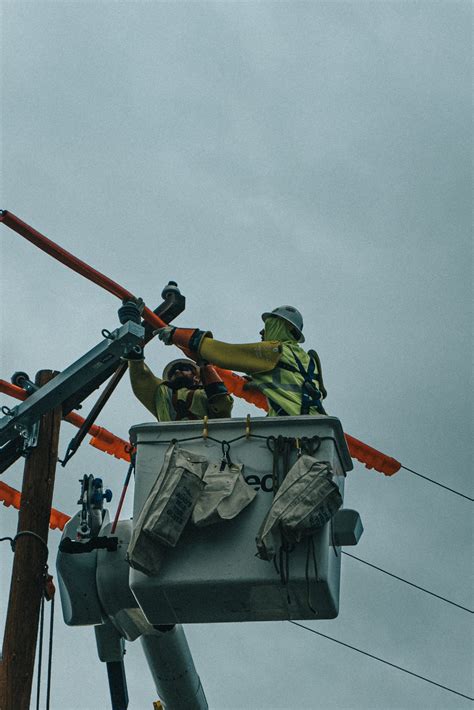How to Become a Lineman: A Comprehensive Guide
Becoming a lineman is a challenging but rewarding career path. It offers excellent earning potential, job security, and the satisfaction of providing a vital service to your community. But it's not a path for the faint of heart – it demands physical strength, mental toughness, and a commitment to safety. This comprehensive guide will walk you through the steps to becoming a successful lineman.
Step 1: Meet the Basic Requirements
Before you even think about climbing a pole, you need to meet some fundamental requirements. These typically include:
- High School Diploma or GED: Most lineman apprenticeship programs require a high school diploma or its equivalent.
- Valid Driver's License: You'll need a clean driving record, as you'll often be driving company vehicles.
- Physical Fitness: Lineman work is physically demanding. Expect rigorous training and a job requiring strength, stamina, and agility. You'll need to pass a physical examination.
- Clean Background Check: Many utility companies conduct thorough background checks to ensure the safety and security of their employees.
Step 2: Choosing Your Path: Apprenticeship vs. Trade School
There are two primary routes to becoming a lineman: an apprenticeship program or a trade school.
Apprenticeship Programs
- Pros: Apprenticeships offer hands-on experience and on-the-job training, typically combining classroom instruction with practical field work. They often lead to direct employment upon completion. Many utilities sponsor their own apprenticeship programs.
- Cons: Apprenticeships can be lengthy (often 4-5 years), and pay during the apprenticeship may be lower than a trade school graduate's starting salary.
Trade Schools
- Pros: Trade schools offer a faster path to certification, providing a focused curriculum that covers the theoretical and practical aspects of line work. This can shorten your time to employment.
- Cons: Trade schools generally offer less hands-on experience than apprenticeships. You may need to actively seek employment after graduation.
Step 3: Gaining the Necessary Skills and Certifications
Regardless of your chosen path (apprenticeship or trade school), you'll need to acquire specific skills and certifications:
- Technical Skills: This includes knowledge of electrical theory, power distribution systems, safety regulations, and the use of specialized tools and equipment.
- Physical Skills: Expect to develop strength, stamina, balance, and dexterity.
- Certifications: Depending on your location and employer, you may need specific certifications like OSHA 10 or other safety-related qualifications.
Step 4: The Application Process and Interview
Once you've completed your training, the application process will likely involve:
- Submitting your application: Highlighting relevant skills and experience.
- Taking aptitude tests: Assessing your cognitive abilities and problem-solving skills.
- Participating in interviews: Demonstrating your knowledge, enthusiasm, and commitment to safety.
- Undergoing a physical examination: Ensuring you meet the physical demands of the job.
Step 5: Continuous Learning and Professional Development
The journey doesn't end after you've secured a job. The lineman profession is constantly evolving. Staying current with new technologies, safety regulations, and best practices is essential for career advancement and maintaining a high level of professionalism.
Key Skills for Success:
- Problem-solving skills: Linemen frequently face unexpected challenges.
- Teamwork: The job often involves working collaboratively with a team.
- Communication skills: Effective communication is vital for safety and efficiency.
- Attention to detail: Precision and accuracy are critical for avoiding accidents.
Becoming a lineman requires dedication, hard work, and a commitment to safety. But with the right training and determination, a successful and fulfilling career awaits. Remember to research local apprenticeship programs and trade schools to find the best fit for your circumstances. Good luck!
